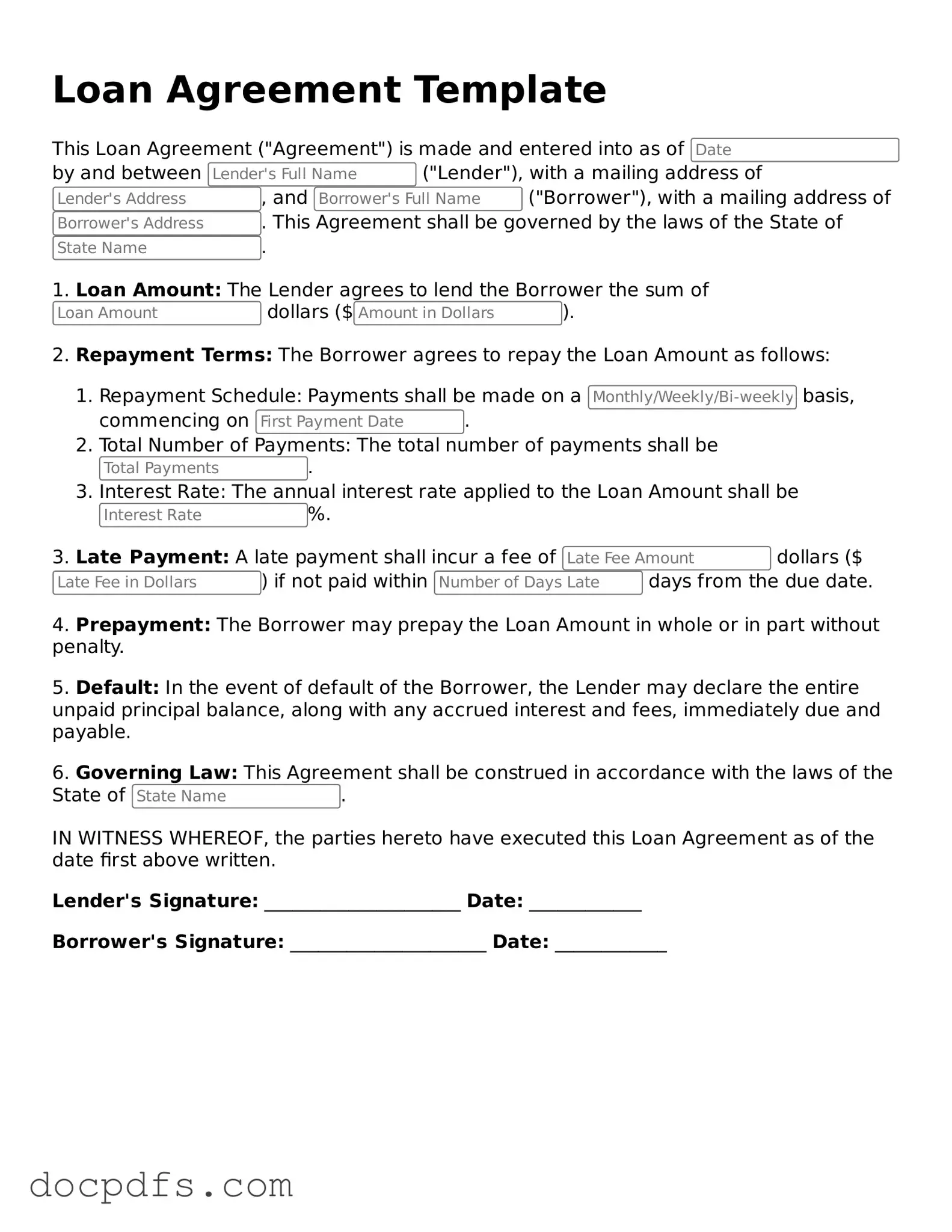When individuals or businesses seek to borrow money, a Loan Agreement form serves as a crucial document that outlines the terms and conditions of the loan. This form typically includes essential details such as the principal amount being borrowed, the interest rate applicable, and the repayment schedule. Additionally, it specifies the duration of the loan, which can vary widely depending on the agreement between the lender and borrower. The agreement often includes clauses that address late payment penalties, collateral requirements, and the rights of both parties in case of default. By clearly articulating these terms, the Loan Agreement helps to protect the interests of both the lender and the borrower, ensuring that all parties understand their obligations and rights. Furthermore, it may also outline the governing law, which indicates the legal jurisdiction that will apply in case of disputes. Overall, a well-structured Loan Agreement form is essential for fostering trust and clarity in financial transactions.
